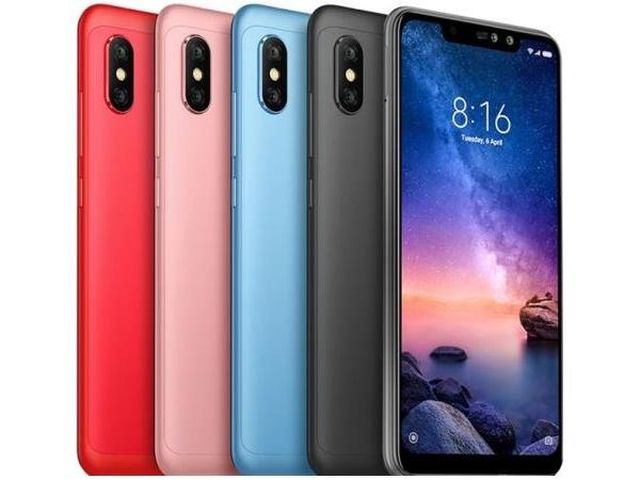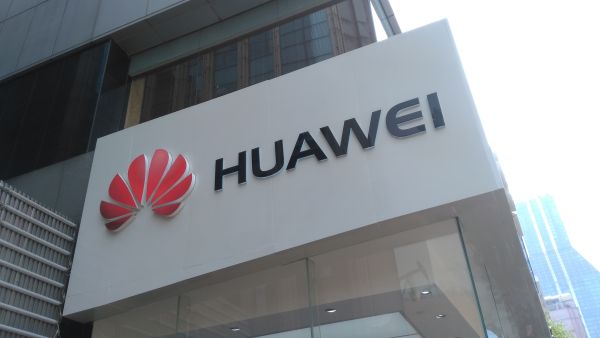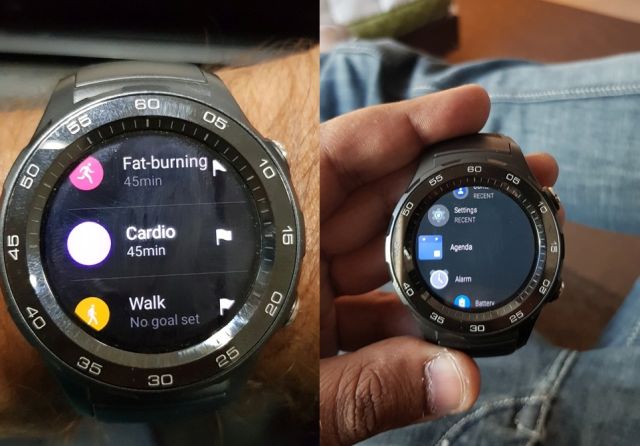
by Editor | May 25, 2021 | Branding, Business, Investing, Markets, Sales, SMEs, Technology
 Bengaluru : Chinese technology player Xiaomi on Friday announced Black Friday sale on “Redmi Note 6 Pro” — just one day after its launch in India.
Bengaluru : Chinese technology player Xiaomi on Friday announced Black Friday sale on “Redmi Note 6 Pro” — just one day after its launch in India.
The smartphone has been launched for Rs 13,999 for the 4GB+64GB and Rs 15,999 for the 6GB+64GB variants.
As part of the sale, the device is available for Rs 12,999 for the 4GB + 64GB variant and Rs 14,999 for the 6GB + 64GB variant — with a sale price drop of Rs 1,000 respectively — only today, the company said in a statement.
The sale is valid on Flipkart, Mi Homes and Xiaomi’s official website.
Launched on Thursday, “Redmi Note 6 Pro” comes with a 6.26-inch FHD+ IPS display, 20MP+2MP AI dual camera on the front and a 12MP+5MP AI dual camera setup on the rear.
The smartphone is powered by Qualcomm Snapdragon 636 octa-core processor and fuelled by a 4000mAh battery with support for Qualcomm “Quick Charge” 3.0.
Both variants would be eligible for a discount of Rs 500 via HDFC credit and debit cards and EMI only during the Black Friday Sale, the company added.
—IANS

by Editor | May 25, 2021 | Markets, Technology, World
 By Barry Eitel,
By Barry Eitel,
San Francisco: A new report Friday finds tariffs on Chinese technology goods proposed by the U.S. could end up costing American consumers up to $3.2 billion per year.
The forecast by the Consumer Technology Association (CTA) finds American consumers would pay between about 3 – 6 percent more for tech products like speakers, headphones, and smartwatches, even if the products were not produced in China. Prices would rise between 8.5 and 22 percent for products with components imported from China.
In July, U.S. President Donald Trump imposed tariffs on $34 billion worth of goods imported from China. By the end of August, tariffs are scheduled to begin on another $16 billion worth of Chinese imports. Late last month, Trump said on CNBC he would be willing to collect tariffs on all Chinese imports, which accounts for some $505 billion worth of goods.
“With the economy thriving under President Trump – we’ve seen remarkably low unemployment and a booming stock market – the administration shouldn’t jeopardize America’s global standing with tariffs,” CTA president Gary Shapiro said in a statement. “Foreign governments don’t pay the cost of tariffs, Americans do – and for that reason, U.S. trade policy needs to steer clear of tariffs that act like taxes on American manufacturers and consumers.”
One proposal from the White House sets tariffs on printed circuit assemblies and connected devices at 10 percent – CTA says that would cost the American economy about $520.8 million per year. Tariffs at 25 percent, which have also been discussed by Trump officials, would cost the economy $2.4 billion annually.
Tech components targeted by Trump are crucial for the manufacture of items ranging from broadband modems to wireless headphones.
“The danger we face – the unintended consequence – is that tariffs mean Americans will pay more for all the devices they use every day to access the internet,” Shapiro added.
—AA

by Editor | May 25, 2021 | Corporate, Corporate Buzz, Markets, Technology
 By Gokul Bhagabati,
By Gokul Bhagabati,
New Delhi : With a viable and immediate solution to the growing problem of data breach eluding the international community for years, governments the world over should consider instituting a system of incentives and disincentives whereby companies failing to protect personal data could be penalised, suggests Chinese technology giant Huawei’s global head of cybersecurity John Suffolk.
“There is no magic solution for cybersecurity, but the governments can start by putting in place a system to entourage companies that do a good job in protecting personal data of users and penalise those found wanting in doing their job,” Suffolk, President of Cybersecurity and Privacy at Huawei, told IANS in an interview here.
The latest report of a massive data breach came from the ride-hailing platform Uber, which disclosed this month that the breach that occurred almost a year earlier affected 57 million customers and drivers.
And Uber is not alone in that league.
Earlier, US-based credit reporting agency Equifax announced that hackers had gained access to the company’s data, potentially impacting approximately 143 million consumers. A hacking attack dating back to 2013 reportedly affected three billion of Yahoo’s user accounts.
The 2012 LinkedIn breach, in which millions of passwords were stolen, will also be fresh in the memory of many. And the list, on which no one wants to be, could go on.
If heads do not roll and businesses run as usual, even after losing records of millions of people, how can we expect enhanced protection of data in the future, Suffolk asked.
“I think one of the gaps that we have at the moment is that we have not really worked on the incentives and disincentives to get the basics of cybersecurity done,” he added.
Finding a practical solution to the threats posed to the cyber space has become all the more urgent in view of the increased digitisation process currently underway in many parts of the world, including India, according to Suffolk, who served as the UK Government CIO and CISO from 2006 to 2011, before joining Huawei.
“The world, including India, rightly wants to digitise much of the public service and use technology to drive growth and innovation. While everybody is using technology to rebuild their economy, there also arises the need to protect the data and services,” Suffolk said.
“The importance of privacy and cybersecurity increases as an economy relies on digitial technology,” said Suffolk, who was in India for the just-concluded fifth edition of the Global Conference on Cyber Space (GCCS) here.
Data breach is a major concern because it can be used for illegal purposes. With personal data available at their disposal, criminals could use it for extracting money or applying for a bank loan in someone else’s name.
Ensuring cybersecurity, according to Suffolk, comes down to getting the basics right every day.
“Many people many not find this exciting, but it is also very important. In the case of Equifax, for example, they did not do the patching, something which is basic cybersecurity,” he pointed out.
“What I have to do to secure your phone may be different from what I have to do to secure telecommunication infrastructure, or for that matter a cloud infrastructure. There are differences in terms of scale, but the basics are similar,” Suffolk said, adding that putting in place just four simple controls can prevent 80 per cent of the attacks.
The governments should give incentives to those who do a good job at protecting data, he added.
Suffolk, however, did not discount the importance of global collaboration, which was the focus of discussions at GCCS 2017, for ensuring cybersecurity.
Because the world is becoming more and more reliant on digitisation, global network and global supply chains, Suffolk believes, every country has the responsibility to keep that inter-connected world up and running in a safe and secure way.
“It would be worthwhile to have real action-oriented statements of intents on a code of conduct on cybersecurity from leaders across the world. It may not be possible to declare every norm in one statement. But there should be a gradual progress forward in evolving such a mechanism on cybersecurity,” he added.
“Creating awareness among the people on how to use the digital platforms safely is also important for the governments. Teaching people how the crooks work is very significant because everybody may not be an expert,” Suffolk said.
He said that Huawei, which works on a range of areas, from chip manufacturing to cloud computing to telecommunications to device management, has a “built-in” approach, not an add-on approach, when it comes to security.
(Gokul Bhagabati can be contacted at gokul.b@ians.in)
—IANS

by Editor | May 25, 2021 | Branding, Business, Large Enterprise, Markets, Technology
 By Sourabh Kulesh,
By Sourabh Kulesh,
New Delhi : As smartwatches slowly gain traction and begin to make an impact globally — including in India — Chinese technology firm Huawei has now launched WATCH 2.
The Huawei WATCH 2 comes in Sports (4G) and classic variants, providing users more connectivity options. The Rs 29,999 device is available in black and has features that will compel you to ditch your smartphone.
Let’s see what works for the device that competes with LG Watch Sport, Samsung Gear 3 and Apple Watch 2.
Introduced earlier this year at the Mobile World Congress in Barcelona, Spain, the smartwatch inherits the classic design of the original Huawei WATCH, with improvements in each category.
Powered by the Qualcomm Snapdragon Wear 2100 processor, the device runs Android Wear 2.0 platform and comes with built-in GPS and a heart rate detection system as well.
The high-quality plastic finish dial is complemented by a sweat-proof silicon strap that can be removed to insert a SIM for connectivity. The wearable has a round dial with two function buttons.
To make the device work efficiently, users need to install the ‘Android Wear’, ‘Huawei Wear’ and ‘Health’ apps.
Once synched with a smartphone, the top right button opens contact list, alarm, settings and torch, among other menus.
A user can use these to set up reminders, track fitness regime and even call and text people in the contact list.
The device sets up a connection via bluetooth and screens your smartphone’s basic functions on the display.
The second button on top right brings up detailed menus under the “Workout” section through which a user can set and track fitness goals.
A user can also check activities via sensors that allow the wearable to gather data including distance, speed and steps, among others.
The device has several in-built watch faces. Swipe right or left and the display will show you watch face options. To go back to previous menu, users can swipe right.
For settings menu, swipe down, and to see updates, pull up the notification bar by swiping up.
The feature-laden smartwatch also lets a user talk through it. When connected via bluetooth, users can pick calls, reject them and even send SMSes from the device. No need to reach out for the phone when you have the WATCH 2 on your wrist!
The device also shows you SMS and WhatsApp messages on the display and you can choose to reply from the watch itself.
If you don’t want to connect your device with your smartphone, you can put a SIM in WATCH 2 and make calls from it. Since you have already signed in with your Google account, you will get all your contacts in the smartwatch itself.
With Huawei WATCH 2, a user can speak to Google Assistant and send a message to his or her contact.
Once you play songs in your smartphone while driving, you won’t need to pick the phone and change the track. You can do it in the watch itself.
Not only that, users can stay connected on social media via WiFi. The device has 4GB in-built storage, enabling users to download several applications in the watch itself.
WATCH 2 gave a day’s battery life when connected to the smartphone and recorded our daily routine.
What doesn’t work?
While several fitness bands and watches have USB 2.0 charging ports, WATCH 2 has a charger that can only work with the device. So you have to carry the charger with you.
Conclusion: Huawei WATCH 2 is a great option for people as well as fitness freaks who want to stay connected when away from phones.
(Sourabh Kulesh can be contacted at sourabh.k@ians.in)
—IANS

by Editor | May 25, 2021 | Corporate Jobs, Employment

Beijing:(IANS) Chinese technology giant Lenovo announced on Thursday that it was laying off 3,200 employees following a disappointing last quarter of business.
The job cut, which will be conducted in the company’s non-manufacturing work force, accounts for about 10 percent of the non-manufacturing headcount and five percent of its total employees globally, a company said.
Lenovo saw profits attributable to its equity holders slump 51 percent year on year to $105 million for the three months through June, or the first quarter of the company’s fiscal year 2015/2016, Xinhua news agency reported.
It vowed to reduce expenses by about $650 million in the second half of this fiscal year by realigning its businesses, accelerating expansion in the PC market and improving efficiency.
Revenues rose three percent year on year to $10.7 billion in the second quarter, with PC business contributing $7.3 billion, down 13 percent year on year.
The company said it sold 13.5 million personal computers worldwide, a decline of seven percent year on year, as the industry was affected by factors such as currency fluctuation and weaker demand ahead of the release of Windows 10, the latest Windows operating system launched in late July.
Revenues from mobile business jumped 33 percent year on year to $2.1 billion, helped by the company’s purchase of Motorola’s mobile business in October 2014.
Smartphone sales grew two percent year on year to 16.2 million in the second quarter, while tablet shipments rose four percent year on year to 2.5 million, the statement added.

 Bengaluru : Chinese technology player Xiaomi on Friday announced Black Friday sale on “Redmi Note 6 Pro” — just one day after its launch in India.
Bengaluru : Chinese technology player Xiaomi on Friday announced Black Friday sale on “Redmi Note 6 Pro” — just one day after its launch in India.



